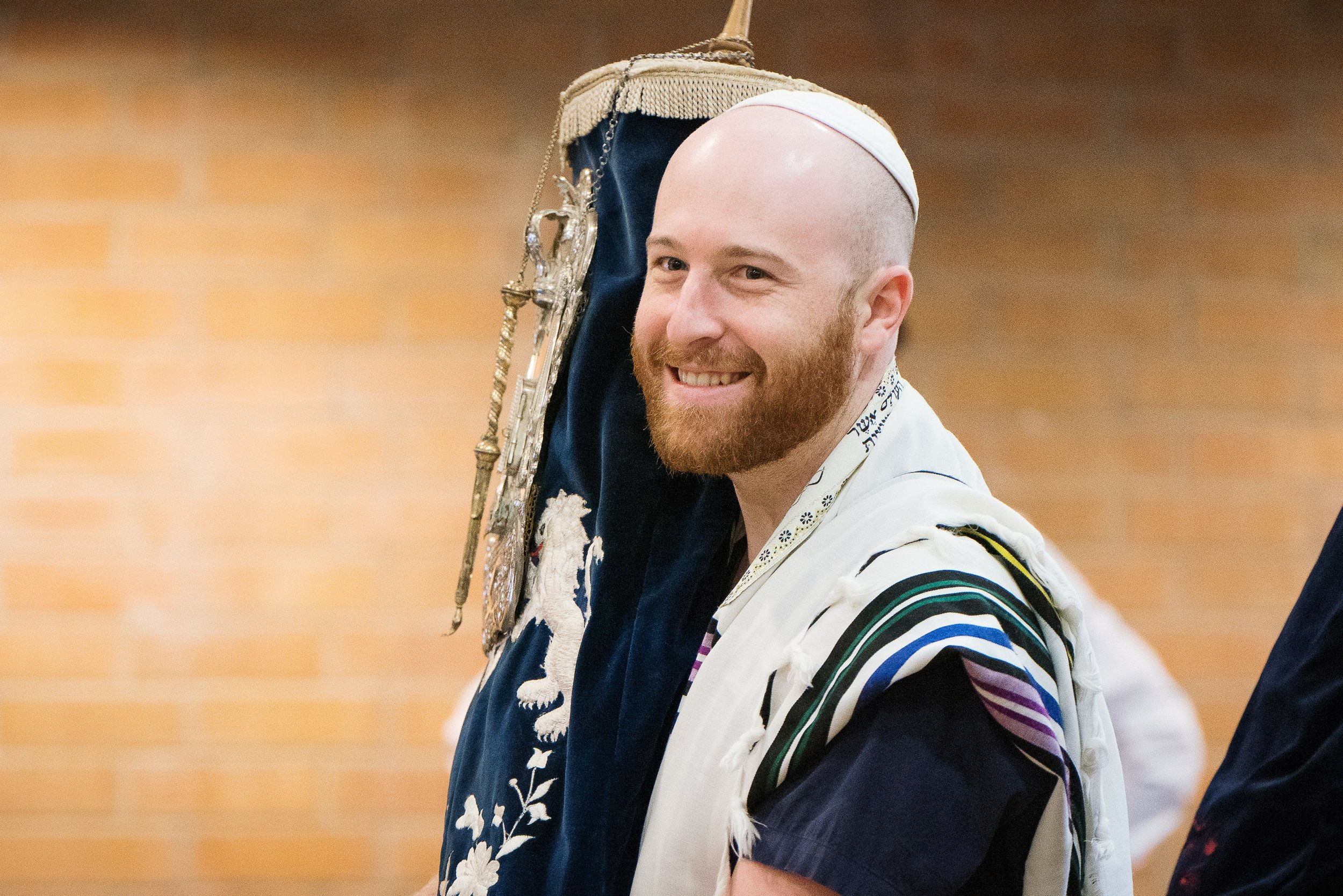Ko te whare e hanga te tangata…
Ko te whare e hanga te tangata, ko te tangata e hangaia e te whare
The whare (house) builds the people, the people build the whare (house).
After 54 years at 108 Greys Avenue, the Auckland Hebrew Congregation and Kadimah School are moving to a more appropriate site at what is now the Saint Kentigern Girls’ School in Remuera. As the site goes up for sale, Sarah Bookman and Seth Schanzer reflect on what it means to lose a building from three perspectives: of having grown up in the space; of community members; and for the architectural community. The property is billed as a “Prime CBD Redevelopment or Add-Value Opportunity” but there is no mention of the quality of its buildings or their original architect (John Goldwater) in the agent’s listing. Completed in 1968, the Kadimah School was updated in 2010 by Richard Goldie and his team at Peddlethorp, who received an Auckland Architecture Award for their work. It has a category ‘B’ heritage listing under the Auckland Unitary Plan.
Building elevation from Greys Avenue.
Sarah Bookman (SB): Each day, as I entered Kadimah School through the gates from Greys Avenue, I would be greeted by a long, low, brick building. I would skip through the aperture that frames the double-height opening before being enveloped by a courtyard containing trees and surrounded by classrooms. The huge synagogue is ahead. Everyone is playing handball here, using the lines of the tiles to make their courts. The space feels different from the rest of the city. My dad and I head to my classroom, through the corridor on the periphery of the large synagogue with windows looking over Myers Park. I see the massive synagogue next to me through small, slotted windows as I dart past. I hear the echoes of Dad saying good morning to every person in the corridor. The vinyl floor of the corridor transitions to terracotta stone. I put my bags in the crowded cloakroom. I run around and around a spiralled staircase, light beaming in from above. I pass my Hebrew room and my old classrooms, and, finally, make it to our fortress of a classroom, up in the treetops.
As students, we each had an understanding that John Goldwater, a member of our community, had designed this school but it was only when we had field trips to another school that I realised just how unique Kadimah was. I cannot begin to imagine what it must have felt like for John, entering the space that he created for his community and that would become the defining work of his career. I wonder how it was to see the building occupied by the first Jewish day school in Auckland: to see the kids lined up for morning prayers under the canopy of the courtyard, to see us receive our first prayer books in front of the synagogue ark – a magnificent collaboration between him and Molly Macalister – to hear students reciting their first words of read Hebrew from the classroom corridors and to see a kitchen full of children braiding challah for Shabbat.
Seth Schanzer (SS): My experience of Kadimah was different from that of having been a student here. Instead, growing up, I felt an innocent pride towards the community centre my grandfather had designed. Unfortunately, I knew him for only the first five years of my life and I remember always sitting on his lap, back when it was impossible to find a seat in the synagogue. Being in that space was always a cause for excitement, having to keep quiet while excitedly trying to locate and grab the attention of Mum in the women’s gallery above. Our eyes were always directed upwards, in awe of the enormous steel structure and the shimmering three-dimensional glass mosaic Star of David chandelier suspended precariously above the timber-slatted bimah (pulpit) and the cantor.
View into the unaltered ‘small synagogue’.
I have struggled to maintain a strong connection to John without his physical presence, though this building is where I feel closest to him. My most intense experience of the building was in the year leading up to my bar-mitzvah, attending classes every Sunday morning. On the day itself, renovations on the main synagogue were already under way, and this meant using the ‘small synagogue’. Designed with the intention that the community’s youth would lead independent services, the seating is circular and deeply intimate as the men’s seating is only two steps below the main floor. Preserved in form, it remains my favourite space in the complex, with the towering brick walls equally amplifying the voice of a skilled cantor and the voices of Kadimah School kids as they bellow out their favourite prayers each weekday morning. During summer, the morning sun beams through the apex clerestory window and falls directly onto the bimah, softly absorbed into the timber ceiling and structurally perplexing, inverted truss above.
SB: Like a home, this building has changed shape, adapting to the people it serves. The synagogue, originally designed to seat 750 people, was now too big for a much-smaller, active community. Goldie’s internal renovations were beneficial to Kadimah, adding in classrooms to avoid renting surrounding buildings. While these were entirely sympathetic to the influences of the original design, inhabiting the ‘new’ space seemed disheartening as you could still feel the presence of the once-voluminous synagogue space, now condensed with classrooms.
It has been, and still is, a process to accept the relocation of the community fully, as it was to inhabit the building after ongoing renovations. While the physical change of the building was somewhat confronting, it was what the change represented. As architectural professionals, we see the building as a beautifully crafted piece of architecture, carefully changed over time while referencing Aalto’s Säynätsalo Town Hall, Le Corbusier’s Ronchamp windows and other greats of that era. We see a building that should be saved and preserved. It would be easy for the architectural community to assume the architect shares the desire to maintain the legacy of the building. But John foresaw the limitations of the site and, after grappling with the realities of living a fully observant orthodox Jewish life, he had begun to work on ambitions for the school and daily activities to move elsewhere. This was a pragmatic approach towards community, to shed his motivation for immortalising his architectural work.
Kadimah students sitting below the Aalto-inspired trusses of the old Alexander Astor Hall (now a gym).
SS: John was both a robust architect and a staunch community member: designer and end-user. In the case of this community centre, architectural heritage and Jewish cultural heritage are two distinct ideas and values that are, unfortunately, coming to an abrupt crossroads. Moving to Remuera puts our deeply loved architectural heritage in a risky position but it also presents the community with an opportunity to ensure the vibrant continuation of our heritage in Auckland. It is a building that functions to cradle a community and it will need to find a new community to continue gracing us with everything that we value so much: to allow other people to recreate the nostalgic memories that we have outlined here.
Embodying John’s pragmatism, the building does not have to be lost forever. Considering the tight-knit communities that already exist in and around the Karangahape precinct of the CBD, this building could easily subsume and support another cause that puts John’s values of empathy and compassion at front and centre. A central-city public school would be the most realistic programme for maintaining the identity of the designed spaces. This is a phenomenal opportunity for the site to offer itself to the city and be embraced in return. However, the future of the site at Greys Avenue is unknown and our only hope is that, whatever it may become, it captures the spirit of the place so many people know and love. As the Jewish community drives forward into its new chapter, so many of us will quietly reflect and raise a l’chaim to the dynamic and changing site on 108 Greys Avenue.
Architecture New Zealand – May 2021 (Issue 3)
Republished with permission





